The General Electric Company (NYSE:GE) of Fairfield, CT, is a multinational conglomerate corporation which operates in a wide range of energy and heavy industrial sectors. Recently released financials for GE’s second quarter of the 2015 fiscal year turned some heads when a strong performance in the quarter allowed the company to increase its guidance on earnings per share (EPS) by three cents for 2015; GE still posted an overall loss of $1.36 billion on the quarter. The corporation pointed to a number of industry deals, including $19 billion in commitments stemming from this year’s Paris Air Show and growth in its industrial Internet sector, as reasons for GE’s positive returns. Industrial Internet makes up a slim amount of GE’s current revenues but some expect sales to increase from just over $1 billion this year to $5 billion by 2017, marking it as an important growth sector for the firm.
GE is currently undergoing a corporate transition, shedding itself of its GE Capital financial services division and moving into new fields like the industrial Internet. Energy management is not the corporation’s largest sector but remarks from company officials indicate that energy storage technologies, especially those designed for renewable energy sources, could quadruple to a $6 billion business by 2020. GE is also getting more involved in building renewable energy production plants in developing markets, such as a recently announced 100 megawatt (MW) wind farm to be built in Kenya’s Kajiado County. Over the course of the 11 months leading up to August 2015, General Electric reported $2.5 billion in orders from sub-Saharan Africa, beating a target that the company was looking to hit by 2018. The corporation may also be trying to leverage its commercial jet engine operations to wade more into the military industrial sector, developing an engine which can switch between supersonic and cruising speeds while in flight for the U.S. Air Force.
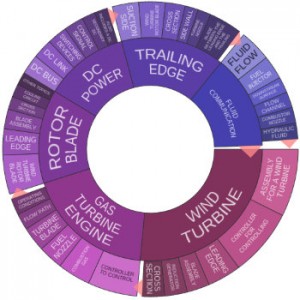 In the world of intellectual property, General Electric occupies a highly respected space among heavy industry players. During 2014, the company was 12th overall among companies receiving patents from the U.S. Patent and Trademark Office with 1,860 U.S. patents issued to GE that year, besting industrial rivals such as Deere & Company (NYSE:DE) and United Technologies Corporation (NYSE:UTX) and placing it among such IP giants as Apple Inc. (NASDAQ:AAPL) and Intel Corporation (NASDAQ:INTC). 2015’s second quarter saw GE earn 533 U.S. patents, which we uncovered using Innography’s patent analysis tools. As the Innography text cluster posted here shows us, a tremendous amount of research and development activity is focused on gas turbines and wind turbines, showing a great deal of activity in energy generation technologies.
In the world of intellectual property, General Electric occupies a highly respected space among heavy industry players. During 2014, the company was 12th overall among companies receiving patents from the U.S. Patent and Trademark Office with 1,860 U.S. patents issued to GE that year, besting industrial rivals such as Deere & Company (NYSE:DE) and United Technologies Corporation (NYSE:UTX) and placing it among such IP giants as Apple Inc. (NASDAQ:AAPL) and Intel Corporation (NASDAQ:INTC). 2015’s second quarter saw GE earn 533 U.S. patents, which we uncovered using Innography’s patent analysis tools. As the Innography text cluster posted here shows us, a tremendous amount of research and development activity is focused on gas turbines and wind turbines, showing a great deal of activity in energy generation technologies.
[Companies-1]
Issued Patents of Note: From Household Energy Management to Purified Human Antibodies
We spotted evidence of GE’s industrial software products reflected by a couple of patents issued by the USPTO to the firm in recent weeks. U.S. Patent No. 9075115, titled Systems and Methods for Monitoring the Health of an Electrical System, protects an electrical generator with an exciter circuit, a direct current (DC) exciter that charges the circuit, a collector assembly delivering power to a set of rotating field windings, and a shaft voltage suppressor that measures radio frequency (RF) signals which could indicate arcing events in the collector assembly. This innovation, which also includes the use of a computer processor to analyze RF signals, is intended to provide better monitoring of the health of electrical generators so that maintenance can be more appropriately scheduled. Data 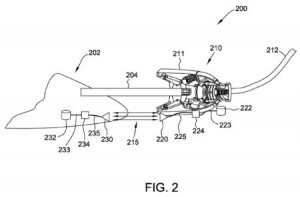 analysis techniques for aviation technologies are discussed within the U.S. Patent No. 9085370, titled Systems and Methods for Wireless Data Transfer During In-Flight Refueling of an Aircraft. The refueling drogue assembly claimed here includes a data transceiver coupled to the drogue body that receives a transmission signal from a partner transceiver coupled to the airborne receiver aircraft as well as a data storage device that receives reconnaissance, mission planning and command and control data. This invention provides a means by which reconnaissance aircraft can offload the data they’ve collected while being refueled in-flight by a drone.
analysis techniques for aviation technologies are discussed within the U.S. Patent No. 9085370, titled Systems and Methods for Wireless Data Transfer During In-Flight Refueling of an Aircraft. The refueling drogue assembly claimed here includes a data transceiver coupled to the drogue body that receives a transmission signal from a partner transceiver coupled to the airborne receiver aircraft as well as a data storage device that receives reconnaissance, mission planning and command and control data. This invention provides a means by which reconnaissance aircraft can offload the data they’ve collected while being refueled in-flight by a drone.
Typically GE develops industrial products but we noted some interesting home technologies that the company is bringing to the consumer market. U.S. Patent No. 9083537, titled Device and Method for Energy Management in a Household. The patent discloses a method for establishing communication between an appliance and a remote device that monitors operation of the appliances, both the appliance and remote device having a processor, a memory, a wireless radio and a port. This invention is designed to provide homeowners with better tools for managing home energy use and Internet protocol aspects of the invention place this technology  squarely in the Internet of Things sector. An improved cooking range which is better able to detect pots and pans placed upon the surface is the focus of U.S. Patent No. 9078449, which is titled Cook Top Grate as Utensil Size/Presence Detector. It protects a method of controlling a cooking appliance by applying an electrical signal along a gap formed in a cooking utensil support structure, detecting an electrical characteristic of the cooking structure by the electrical signal and determining a cooking utensil characteristic from the electrical characteristic. This method is capable of improving cooking performance and even any conditions that may require an alert.
squarely in the Internet of Things sector. An improved cooking range which is better able to detect pots and pans placed upon the surface is the focus of U.S. Patent No. 9078449, which is titled Cook Top Grate as Utensil Size/Presence Detector. It protects a method of controlling a cooking appliance by applying an electrical signal along a gap formed in a cooking utensil support structure, detecting an electrical characteristic of the cooking structure by the electrical signal and determining a cooking utensil characteristic from the electrical characteristic. This method is capable of improving cooking performance and even any conditions that may require an alert.
We were very intrigued to see some General Electric innovations which showcase some of the corporation’s forays into healthcare tech. U.S. Patent No. 9044740, issued under the title Purification of Immunoglobulins, claims a separation matrix to which at least one ligand containing an aliphatic sulfamide group has been covalently immobilized. This innovation is designed to improve immunotherapies by providing alternative methods for purifying antibodies or immunoglobulins in accordance with increased demand for cost-effectiveness, potency and safety. Intensive pediatric care units will benefit from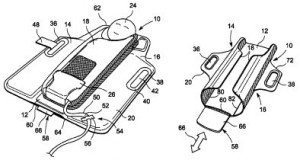 the technology outlined within U.S. Patent No. 9066609, which is titled Infant Patient Transfer Device. The transfer device for supporting an infant patient disclosed here includes a center support section with a receiving pocket and positionable underneath the infant patient, a removable backboard stiffening device placed within the receiving pocket to provide support and two side sections with handles which are movable towards each other. This innovation is intended to reduce the risk of tube disconnects and general injury to infant patients by providing additional support when the infant is moved.
the technology outlined within U.S. Patent No. 9066609, which is titled Infant Patient Transfer Device. The transfer device for supporting an infant patient disclosed here includes a center support section with a receiving pocket and positionable underneath the infant patient, a removable backboard stiffening device placed within the receiving pocket to provide support and two side sections with handles which are movable towards each other. This innovation is intended to reduce the risk of tube disconnects and general injury to infant patients by providing additional support when the infant is moved.
[Companies-2]
General Electric’s Patent Applications: From Healthcare Facility Management to Subsea Energy Transmission
Medical and healthcare technologies were again prevalent when taking a survey of GE patent applications recently published by the USPTO. U.S. Patent Application No. 20150178529, titled System and Method to Detect an Event Associated with a Person Relative to a Bed, would protect a system that detects an event through the use of an antenna, a tag reader and a remote server which work together to detect the proximity of a tag to the tag reader. This system can read a change in impedance of an antenna loop to detect an event happening to a patient wearing a patient tag within a healthcare facility. More infant care technologies are on display within U.S.  Patent Application No. 20150182722, which is titled Infant Care Station Humidification Management System. The humidification management system that would be protected by this patent application utilizes an output device and a controller to generate control signals based upon a determined rainout condition. This humidity control system is designed to provide humidity to an infant patient care unit, which enhances skin development, while preventing against excess condensation that forms rainout, which can pose an infection risk to children. Techniques for determining a better course of treatment when dealing with cancer are described within U.S. Patent Application No. 20150198599, filed under the title TLE3 as a Marker for Chemotherapy. The patent application would protect a method of identifying a breast cancer that will not respond favorably to a chemotherapy treatment that includes either taxane or a taxane derivative; the method involves performing immunohistochemical staining for TLE3 polypeptide on a cancer sample. This technology enables a more effective process of selecting chemotherapies to administer to a patient, especially when the therapy in question is paclitaxel, which carries adverse side effects.
Patent Application No. 20150182722, which is titled Infant Care Station Humidification Management System. The humidification management system that would be protected by this patent application utilizes an output device and a controller to generate control signals based upon a determined rainout condition. This humidity control system is designed to provide humidity to an infant patient care unit, which enhances skin development, while preventing against excess condensation that forms rainout, which can pose an infection risk to children. Techniques for determining a better course of treatment when dealing with cancer are described within U.S. Patent Application No. 20150198599, filed under the title TLE3 as a Marker for Chemotherapy. The patent application would protect a method of identifying a breast cancer that will not respond favorably to a chemotherapy treatment that includes either taxane or a taxane derivative; the method involves performing immunohistochemical staining for TLE3 polypeptide on a cancer sample. This technology enables a more effective process of selecting chemotherapies to administer to a patient, especially when the therapy in question is paclitaxel, which carries adverse side effects.
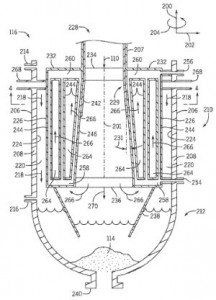 We also spotted a trio of energy generation technologies that we thought we’d share with our readers who might be interested to know the scope of GE’s energy innovations. The production of synthetic fuel gas from carbonaceous materials is featured within U.S. Patent Application No. 20150175915, filed under the title Syngas Cooler. It would protect a system comprised of a gasifier that produces a syngas, a syngas cooler with a cooling chamber configured to separate particulates from the syngas and flow the syngas through a tapered plurality of tubes. The removal of particulate like slag and sulfides reduces the forming of those deposits within a cooler, reducing its efficiency over time. Underwater energy systems for use in offshore drilling for oil and gas are discussed within U.S. Patent Application No. 20150184660, titled Methods and Systems for Subsea Boosting with Direct Current and Alternating Current Power Systems. This patent application discloses a subsea boosting module comprised of a housing with an interior chamber, a fluid pump disposed within the chamber, an electric motor coupled to the fluid pump and a plurality of power components to deliver power to the electric motor. This innovation is designed to improve upon conventional subsea alternating current (AC) distribution systems, which experience problems in transmitting power at distances greater than fifty kilometers (31 miles). The storage of energy through regenerative braking techniques implemented in off-highway mining vehicles (OHV) is the focus of U.S. Patent Application No. 20150207344, which is titled Configurable Hybrid Energy Storage System and Method. The energy storage system claimed here includes an energy management module that creates an electrical interconnect between two energy storage units within the power bus of a vehicle, the module being able to select between energy balance and energy discharge modes of operation and deliver electrical
We also spotted a trio of energy generation technologies that we thought we’d share with our readers who might be interested to know the scope of GE’s energy innovations. The production of synthetic fuel gas from carbonaceous materials is featured within U.S. Patent Application No. 20150175915, filed under the title Syngas Cooler. It would protect a system comprised of a gasifier that produces a syngas, a syngas cooler with a cooling chamber configured to separate particulates from the syngas and flow the syngas through a tapered plurality of tubes. The removal of particulate like slag and sulfides reduces the forming of those deposits within a cooler, reducing its efficiency over time. Underwater energy systems for use in offshore drilling for oil and gas are discussed within U.S. Patent Application No. 20150184660, titled Methods and Systems for Subsea Boosting with Direct Current and Alternating Current Power Systems. This patent application discloses a subsea boosting module comprised of a housing with an interior chamber, a fluid pump disposed within the chamber, an electric motor coupled to the fluid pump and a plurality of power components to deliver power to the electric motor. This innovation is designed to improve upon conventional subsea alternating current (AC) distribution systems, which experience problems in transmitting power at distances greater than fifty kilometers (31 miles). The storage of energy through regenerative braking techniques implemented in off-highway mining vehicles (OHV) is the focus of U.S. Patent Application No. 20150207344, which is titled Configurable Hybrid Energy Storage System and Method. The energy storage system claimed here includes an energy management module that creates an electrical interconnect between two energy storage units within the power bus of a vehicle, the module being able to select between energy balance and energy discharge modes of operation and deliver electrical 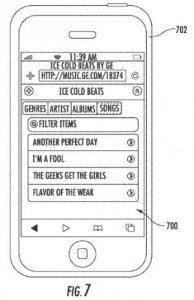 current to the vehicle’s power bus from either energy storage unit. This innovation is intended to help heavy vehicles meet emissions guidelines put in place by the U.S. Environmental Protection Agency regarding fuel efficiency.
current to the vehicle’s power bus from either energy storage unit. This innovation is intended to help heavy vehicles meet emissions guidelines put in place by the U.S. Environmental Protection Agency regarding fuel efficiency.
Finally, we were piqued while taking a quick glance at U.S. Patent Application No. 20150200977, titled Appliance Systems Providing User-Friendly Shared Music Playlist Editing. The method for operating a device claimed here involves identifying a plurality of audio files accessible by the appliance over one or more local area networks (LANs), uploading data identifying the audio files to a server, providing an access code for the server to a user computing device, receiving an audio file selected for playback through the server and causing one or more speakers to play the audio file. This technology is designed for use in areas of a home where people typically congregate, especially the kitchen, to enable more effective compiling of a group playlist from a multitude of computing devices.

![[IPWatchdog Logo]](https://ipwatchdog.com/wp-content/themes/IPWatchdog%20-%202023/assets/images/temp/logo-small@2x.png)

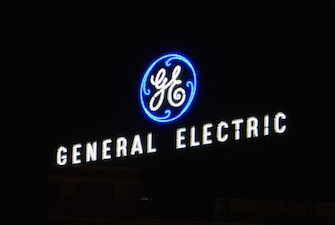
![[Advertisement]](https://ipwatchdog.com/wp-content/uploads/2024/04/Patent-Litigation-Masters-2024-sidebar-early-bird-ends-Apr-21-last-chance-700x500-1.jpg)

![[Advertisement]](https://ipwatchdog.com/wp-content/uploads/2021/12/WEBINAR-336-x-280-px.png)
![[Advertisement]](https://ipwatchdog.com/wp-content/uploads/2021/12/2021-Patent-Practice-on-Demand-recorded-Feb-2021-336-x-280.jpg)
![[Advertisement]](https://ipwatchdog.com/wp-content/uploads/2021/12/Ad-4-The-Invent-Patent-System™.png)







Join the Discussion
No comments yet.